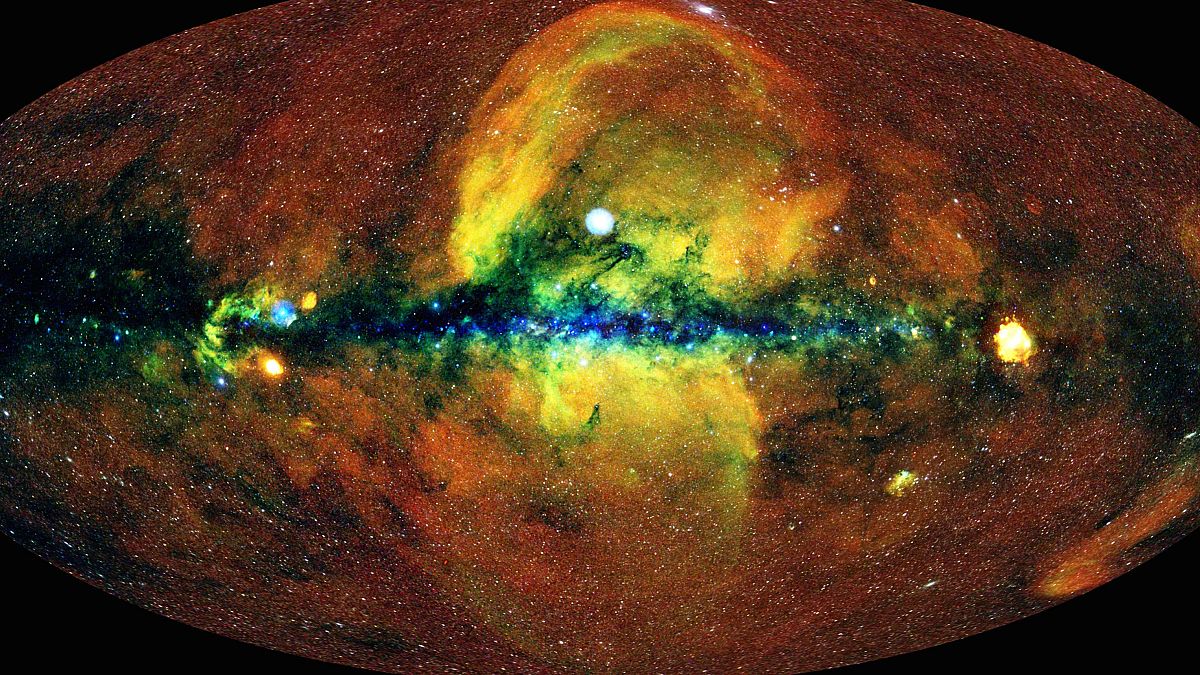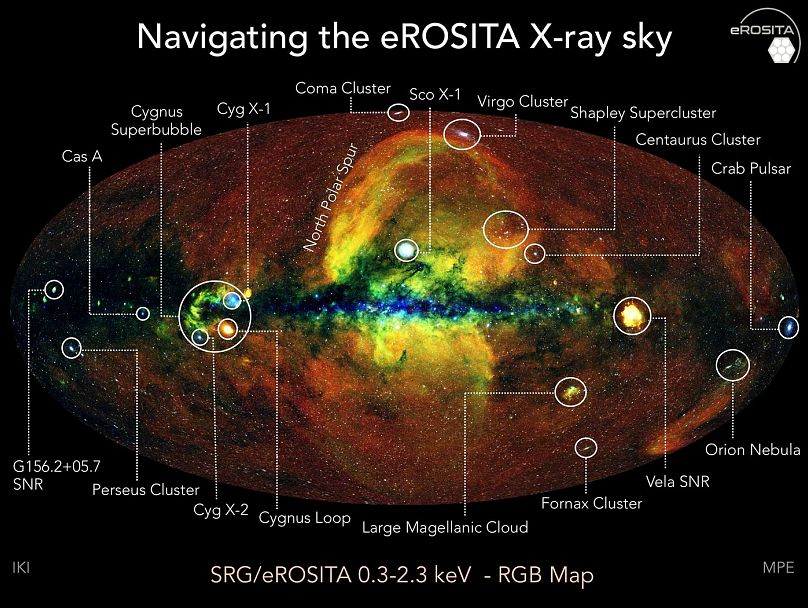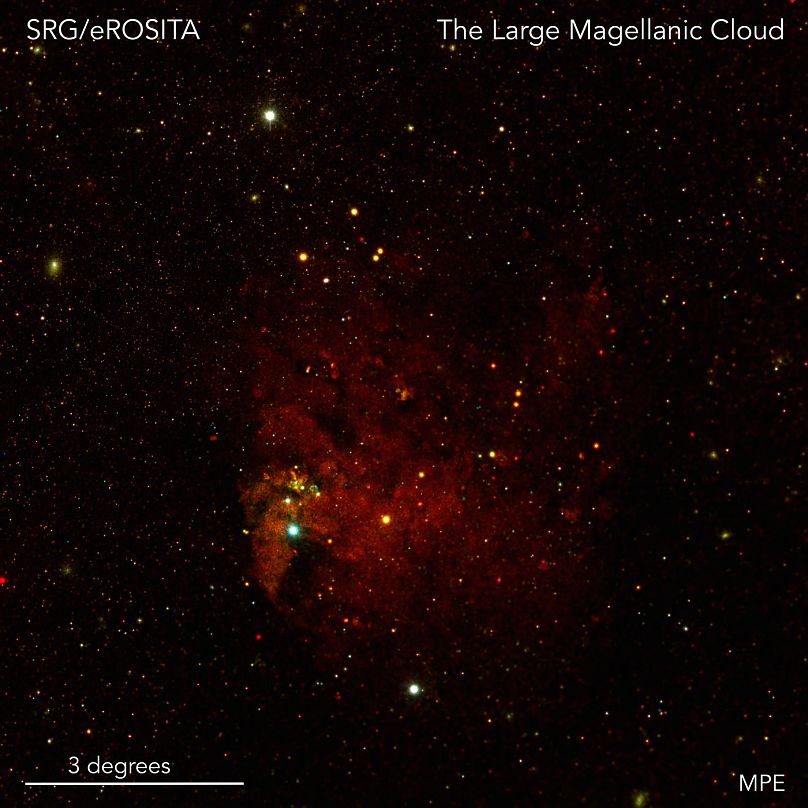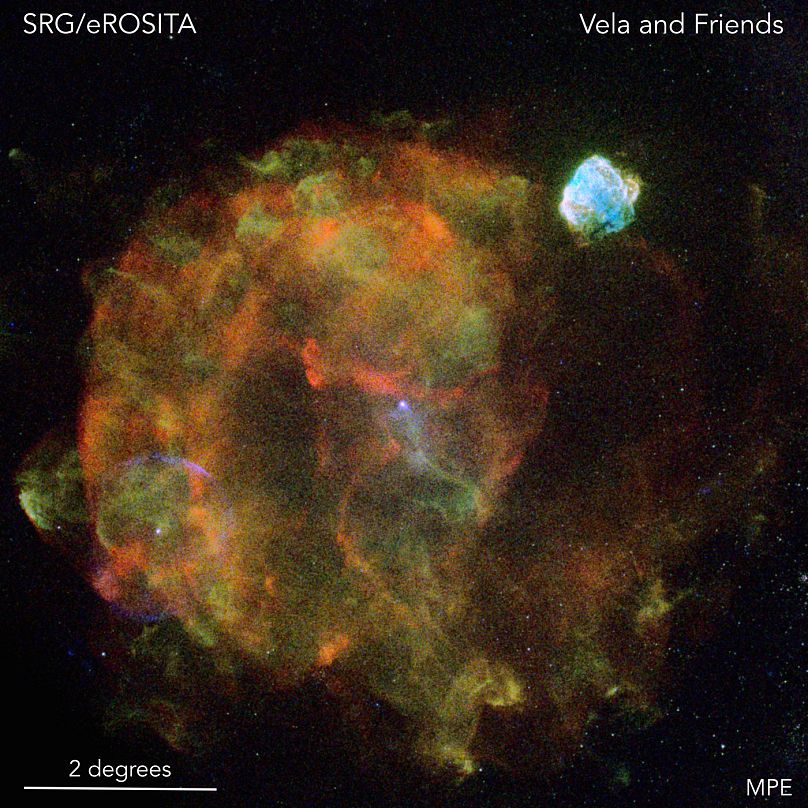A breathtaking map of the entire sky around us has been captured by an X-ray telescope, revealing many mysteries hidden to optical telescopes.
A breathtaking map of the sky has been captured by an X-ray telescope, revealing a universe that looks remarkably different to the one we see with traditional telescopes.
By viewing the universe in X-rays, the so-called "hot and energetic universe" can be seen, detailing objects that emit incredible heat, move at great speed, or are extremely dense.
These include rare phenomena such as merging neutron stars, stars being swallowed by black holes, and less rare but no less impressive - areas of extremely hot gas, where stars are born.
The all-sky image includes one million sources of X-rays, and “completely changes the way we look at the energetic universe”, according to Peter Predehl, the Principal Investigator of the eROSITA telescope at the Max Planck Institute for Extraterrestrial Physics (MPE).
The wealth of data gathered is a huge leap forward from the previous X-ray scans of the sky, with the eROSITA gathering around 10 times more sources than the previous all-sky survey 30 years ago. This is around as many sources as have been discovered by all past X-ray telescopes combined.
What does the image actually show?
Andrea Merloni, a senior scientist at MPE, explains that X-Ray astronomy gives a view of the "hot and energetic universe" which is largely invisible to optical telescopes.
“It’s the same universe that everybody can observe, but our instruments are sensitive to those objects in the universe that are very hot, or energetic, such as big explosions, shock waves, very fast motions, or extreme gravity such as black holes,” he tells Euronews.
Essentially, only certain types of objects emit X-rays in large numbers. While our Sun, for example, does emit X-rays these are in tiny numbers compared to objects such as stars being swallowed by black holes or extremely hot gas.
Without X-ray telescopes, many of these objects would not be detected with instruments looking at different wavelengths.
“In order to get X-rays you need millions of degrees of heat,” says Merloni. “The brightest optical stars will not necessarily be the brightest X-ray stars, and vice-versa.”
The eROSITA telescope, which was launched in 2019 on the SRG spacecraft, needs to operate in orbit because X-rays get absorbed by the Earth’s atmosphere, so they have to be studied from space.
New clues on the regulatory process in the Milky Way
In the image at the top, you can see swathes of extremely hot gas within the Milky Way, in yellow, red and blue - the colours representing different amounts of X-ray radiation.
“In a sense, the galaxy is a cycle in which stars form out of this gas, and then they give back this material and energy in the form of an explosion,” explains Merloni. It’s a self-regulatory process, and with the information gathered his team expect to develop a better understanding of the balance of formation and destruction.
“We are confident we will be providing some new clues on the regulatory process in the Milky Way, how many stars will form and have formed,” he says.
But studying the Milky Way was not the main goal for this mission.
Answers about the evolution of the universe
On the all-sky map, there are around a million tiny dots, most of which represent galaxies, or clusters of galaxies that have black holes at their centre. The black holes emit high levels of X-rays.
Hot gas between galaxies can also be observed, as well as unusual stars.
“The main motivation for building eROSITA, and how we got it funded, was to use clusters of galaxies to study the universe and the evolution of the universe. This was the big question we wanted to answer and it will take us some years,” says Merloni.
But this is just the first of a number of all-sky surveys. Extrapolating from previous X-Ray studies, which focused on small sections of the sky, Merloni’s team expects by the end of the project in around 3 and a half years’ time, there will be something in the region of 8 million X-ray sources to study.
“Large sky areas have already been covered at many other wavelengths, and now we have the X-ray data to match. We need these other surveys to identify the X-ray sources and understand their nature,” said Mara Salvato, who leads the effort to combine eROSITA observations with other telescopes across the electromagnetic spectrum.
The data for this image was gathered over six months. The accumulated information by the end of the project will keep scientists busy “for decades”.
“Overall, during the next 3.5 years, we plan to get seven maps similar to the one seen in this beautiful image. Their combined sensitivity will be a factor of five better and will be used by astrophysicists and cosmologists for decades.”



